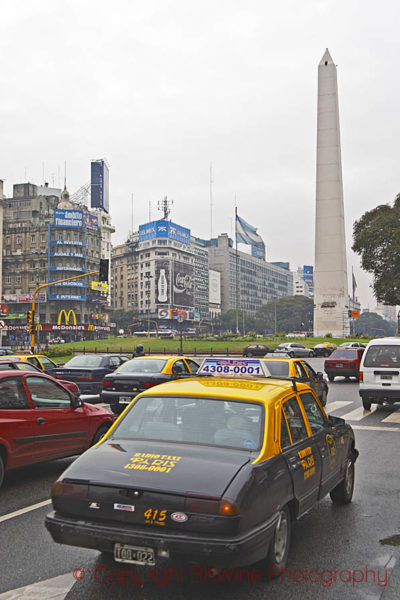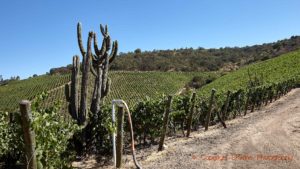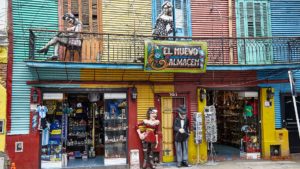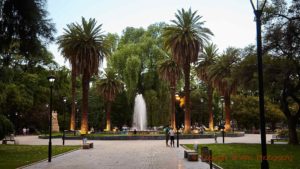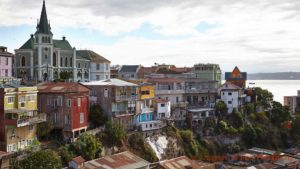The city of Buenos Aires is a fantastic mixture of old and new, of rich and poor, of internationalism and provincialism. If one compares it to Mendoza, a curious contrast becomes quickly apparent. With its one million inhabitants, Mendoza feels much smaller than it is, while Buenos Aires (population no more than 3 million) feels enormous, as big as Paris or London.
But perhaps the numbers are deceptive (statistics are not Argentina’s strong point): if one looks closer, the metro area includes an estimated 13.5 million people – and that’s just an estimation.
Regardless of the figures, Buenos Aires is a huge and fascinating city. My reaction when I visited for the first time was that it felt quite European, a mix between Paris (in terms of size) and Milan (for its architecture and organisation). As it happens, Italians were one of the largest groups to emigrate to Argentina, but of course this was mainly in the late 1800s and early 1900s, when Argentina was the world’s seventh biggest economy, ahead of France, Italy and Germany.
In these few paragraphs I’d like to give you a quick introduction to Buenos Aires. Note that this is not intended as an in-depth guide, which of course you can find online or in guide books, but rather a just short overview of the main districts.
You could spend days and weeks exploring this fascinating city, but let’s start with what are probably Buenos Aires’ two most famous sites.
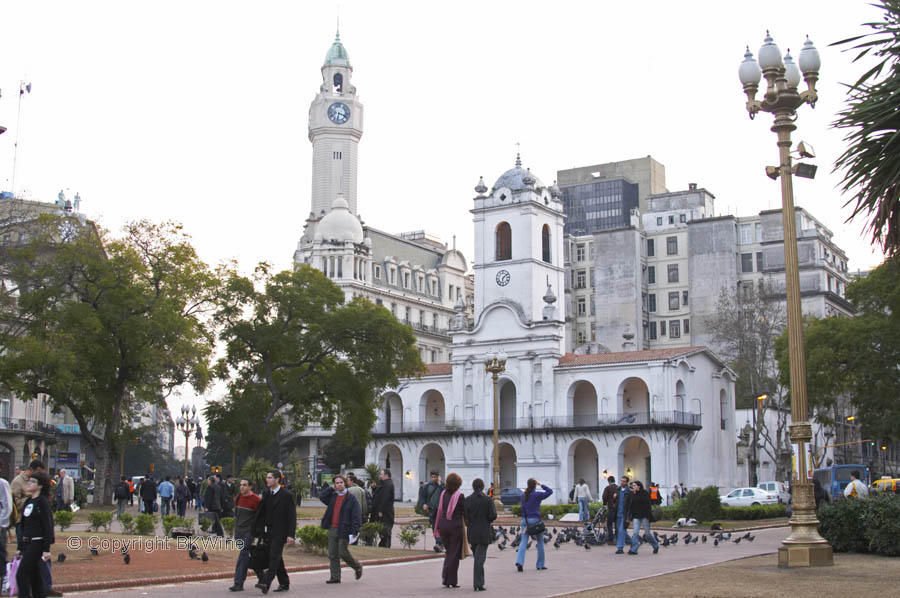
Avenida 9 de Julio
The Avenida 9 de Julio is supposedly the world’s widest avenue, and you certainly shouldn’t try to cross from one side to another in one go. It is named after the date in 1816 when Argentina achieved independence, then including both Uruguay and parts of Bolivia.
Also on the same street is another world-famous site, namely the Teatro Colón (primarily an opera house), built between 1889 and 1908. Ranked the tworld’s third-best opera house, the first performance here was Aida.
There are several other interesting points on the Avenida. At the very bottom is the French Embassy, in the middle is a vast obelisk, and at the top is a forbidding building housing the Ministry of Communications, boasting an artwork depicting Evita Perón on the facade.
Buenos Aires is also famous for its trees; you’ll see plenty of curious trees along the Avenida as well as in other parts of the city.
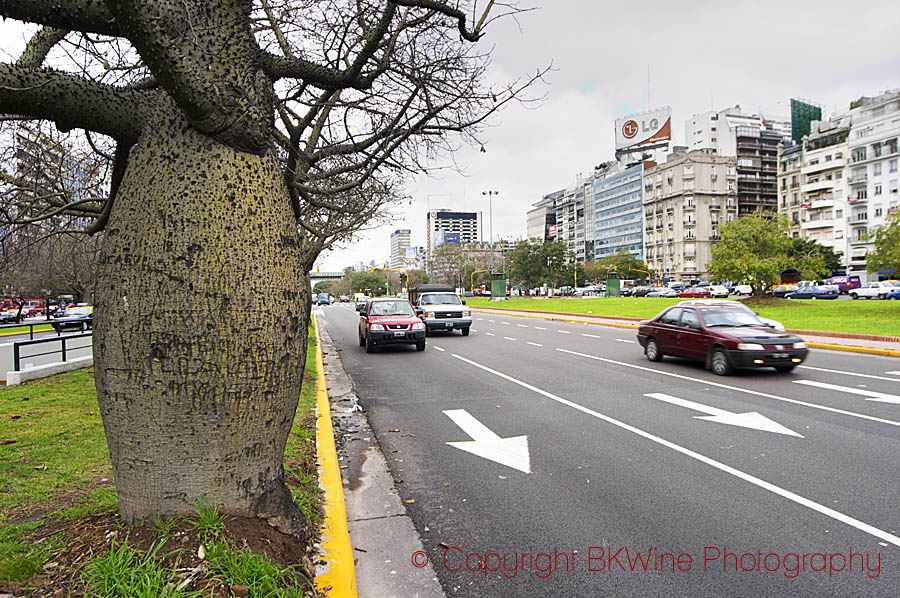
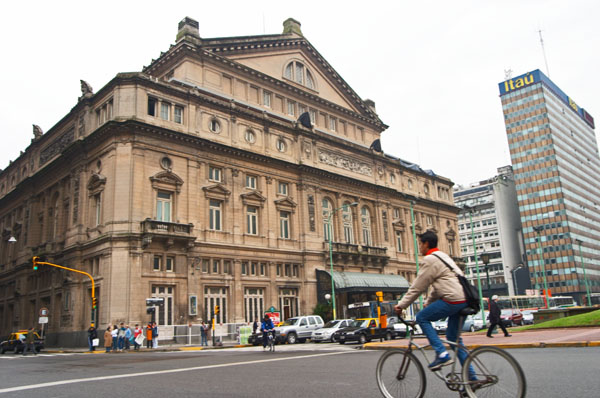
Recoleta
East of 9 de Julio (the avenida or calle is often dropped in addresses) is a part of town called Recoleta. This is a busy shopping district, and the further north and east you travel, the more elegant it becomes. There are many impressive buildings including embassies and hotels, and plenty of restaurants.
A couple of things to look out for:
The Cemeterio de la Recoleta with the tomb of Evita Perón, as well as many other graves that look more like mausoleums than anything else. A curious and interesting place to visit. Continuing beyond el cemeterio you come first to a park area (a popular place for strolling) and then to the National Art Museum and the Evita monument.
At 1860 Avenida Santa Fe there is an amazing bookshop in what was once a theatre, El Ateneo Grand Splendid (a café occupies the former stage).
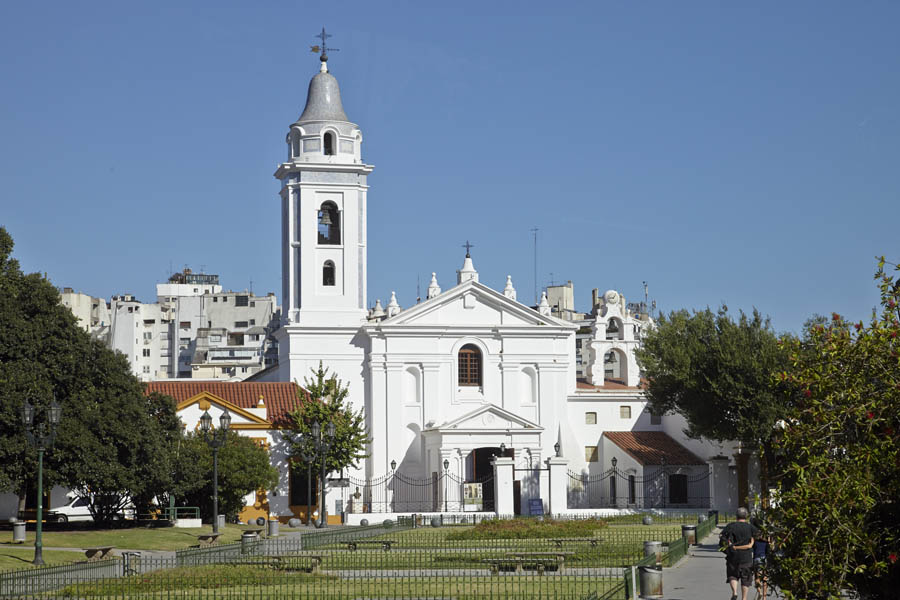
Palermo
Moving further away from 9 de Julio is Palermo, a well-heeled part of Buenos Aires with attractive parks, a botanic garden, many impressive embassy buildings and a famous rose garden.
Retiro
Retiro is (mainly) on the other side of 9 de Julio. The park Plaza San Martin is home to a curious clock tower similar to London’s Big Ben, which was a gift from the British community. Ironically, it stands just across the street from a war monument commemorating the Falklands/Malvinas war.
This is also a busy shopping district that features more imposing office buildings than on the Recoleta side.
Continuing through Retiro down towards the river you come to…
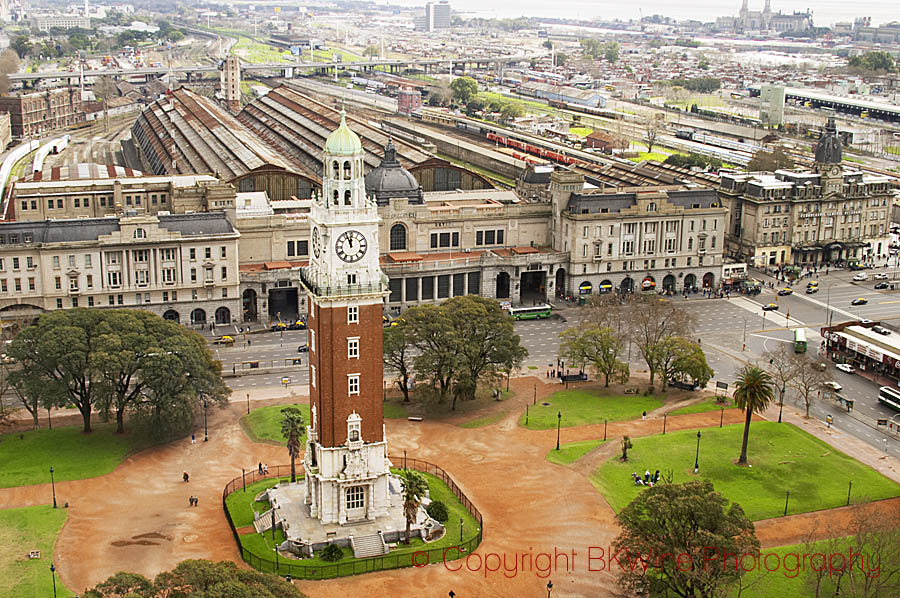
Puerto Madero
It has nothing to do with wood (madera) but is named after Eduardo Madero who was put in charge of building a new harbour for Buenos Aires in the late 19th century. As time passed it became a grubby and neglected harbour area, but since the end of the 20th century, a huge redevelopment project has transformed the old harbour into a shiny, new neighbourhood with offices, apartment buildings, hotels and shops.
On the land side (Avenida Ing. Huergo) many old warehouses have been converted into restaurants and cafés, often with attractive views over the water on the riverside. Some handsome old ships usually lie in the dock; also noteworthy is architect Santiago Calatrava’s Puente de la Mujer (the Woman’s Bridge).
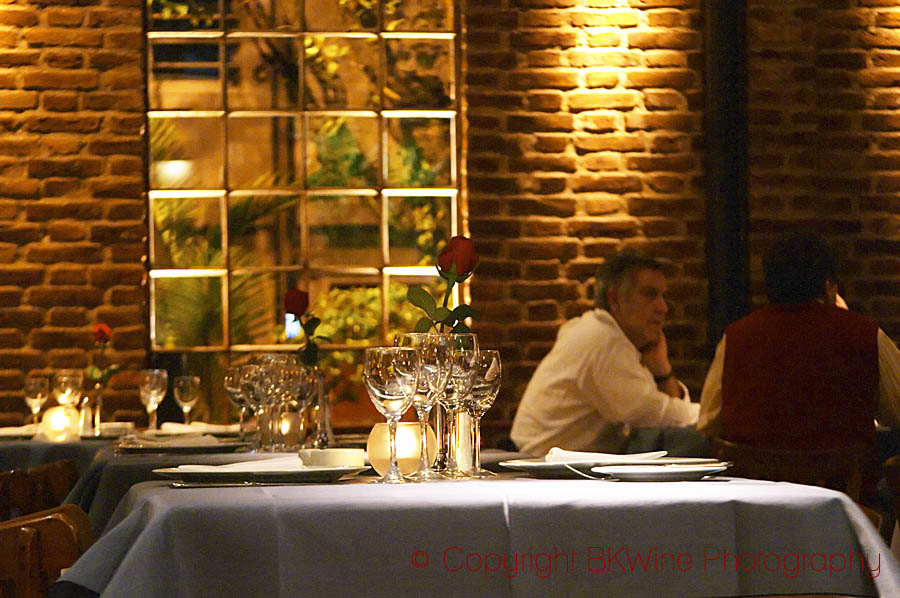
Plaza de Mayo
Continuing south and returning to the city you come to Plaza de Mayo, the central square of Buenos Aires (at least politically and administratively speaking). At one end is the president’s Casa Rosada and at the other, the Cathedral Metropolitana (not very impressive from the outside), as well as the curious old building housing the History Museum and many other official buildings around the square.
Also on the square is a group of permanent protesters – the Madres de Plaza de Mayo (Mothers of the Plaza) – who are campaigning for an investigation into the disappearances that happened during a violent distant era; the square is often the scene of demonstrations that can sometimes become rather violent.
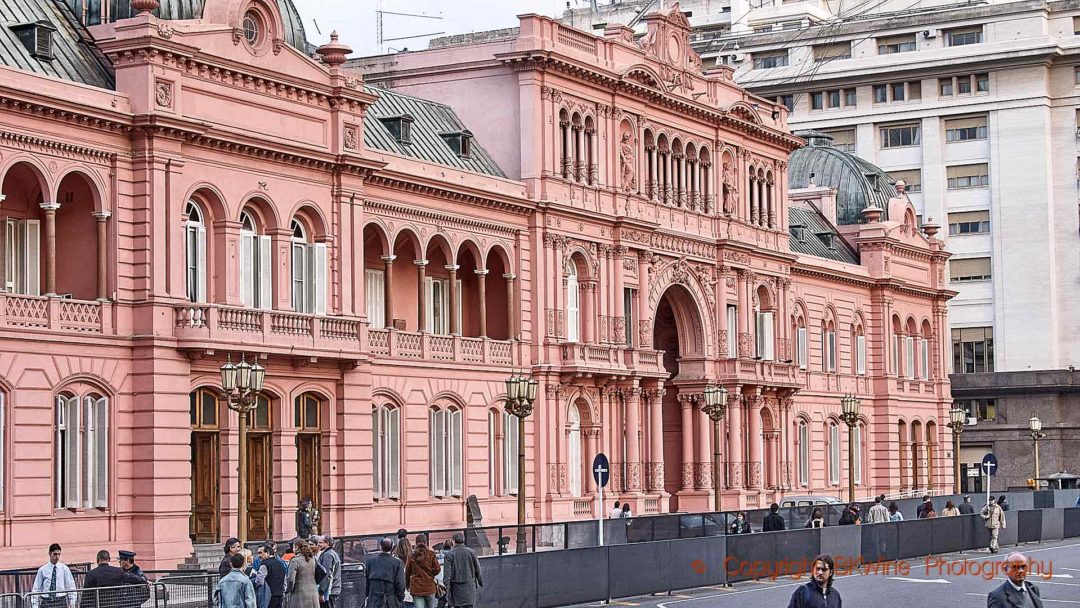
San Telmo
Continuing south we come to San Telmo. This is quite a charming district with fewer modern buildings and high-rises. It is famous for its antiques and bric-a-brac shops, found in the area around Plaza Dorrego where there are also plenty of restaurants. Other parts of San Telmo are a little more rustic.
La Boca
A little further south is the very famous area of La Boca. However, we advise you not to walk all the way here as this older neighbourhood is also a rather rough part of the old harbour district that is renowned for its colourful houses built with cheap corrugated iron. One possible explanation for these brightly-hued dwellings is that they were decorated using left-over materials from the harbour’s boat yards.
La Boca is a compulsory stop for most visitors to Buenos Aires, so don’t expect to find a truly genuine atmosphere. In a very small area between C. Gregorio Araoz de Lamadrid and the docks (Plazoleta de los Suspiros), there are literally hundreds of restaurants, trinket shops, street tango dancers and anything else that can attract tourists.
La Boca is of course also famous for its football team that sports the Swedish blue and yellow colours. Why? We’ll leave you to keep guessing about that…
One word of caution: when in La Boca, don’t stray too far from where the tourists are, as the neighbouring area is very rough. Keep a sharp eye on all your belongings.
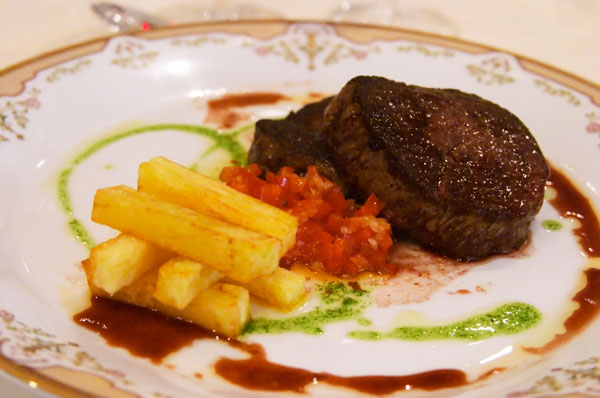
A few other curiosities
Many people have dogs but cannot take them for a walk during daytime when they are working, so in the parks of Buenos Aires you’ll see dog minders, ie. people who take care of your dog during the day, sometimes walking as many as a dozen dogs at a time. There is a rule stipulating the number of dogs a minder can take, but no-one seems to pay much attention to this.
The impressive Plaza del Congreso houses Argentina’s parliament, known as the Congreso de la Nación.
There are many tango shows in Buenos Aires, and it is certainly worth visiting one. Tango is a unique contribution from Argentina (and Uruguay, and Finland) to the world’s music and dance culture. What used to be something only played in bordellos has now become high culture. You can find everything from big-theatre shows to small clubs mainly for locals. Carlos Gardel is the most famous exponent.
A note on security
Buenos Aires is a big city with huge contrasts between rich and poor, and inevitably these contrasts have an effect, as in many other places. Potential problems include pickpockets, bag-snatchers and camera thiefs, so be extremely careful with your belongings. Similarly, avoid wearing obvious or ostentatious jewellery.
You should also be extra-careful if you venture out to any of the more unsavoury parts of the city (there are many), where tourists do not typically go.
More info
For more advice, look also in our Argentina FAQ: currency, taxis, restaurants, shopping etc.
Getting to and from the airport
Buenos Aires has two airports, a domestic one which is very close to the city centre, outside Palermo (Aeroparque Jorge Newbery).
The international airport, called Ezeiza, is quite a long way from the city centre. The journey by car can take 45 minutes, or much more if traffic is heavy. You can take a taxi or a private transfer to/from the airport. This will probably cost around US$ 40-50 (or similar in ARS). There are also minibus services and city buses.
Feeling tempted to go visit Buenos Aires? Then you should come on a wine tour to Argentina and Chile with BKWine, and maybe extend it with a day or two extra in BA.
Travel to the world’s wine countries with the people who know wine and the local culture, with those who can give you the best experience. Travel with those who can take you to the best producers and the most beautiful spots. Where you get to taste the most exciting wines, personally meet the winemakers, and enjoy the true local gastronomy.
Travel with BKWine Tours!
